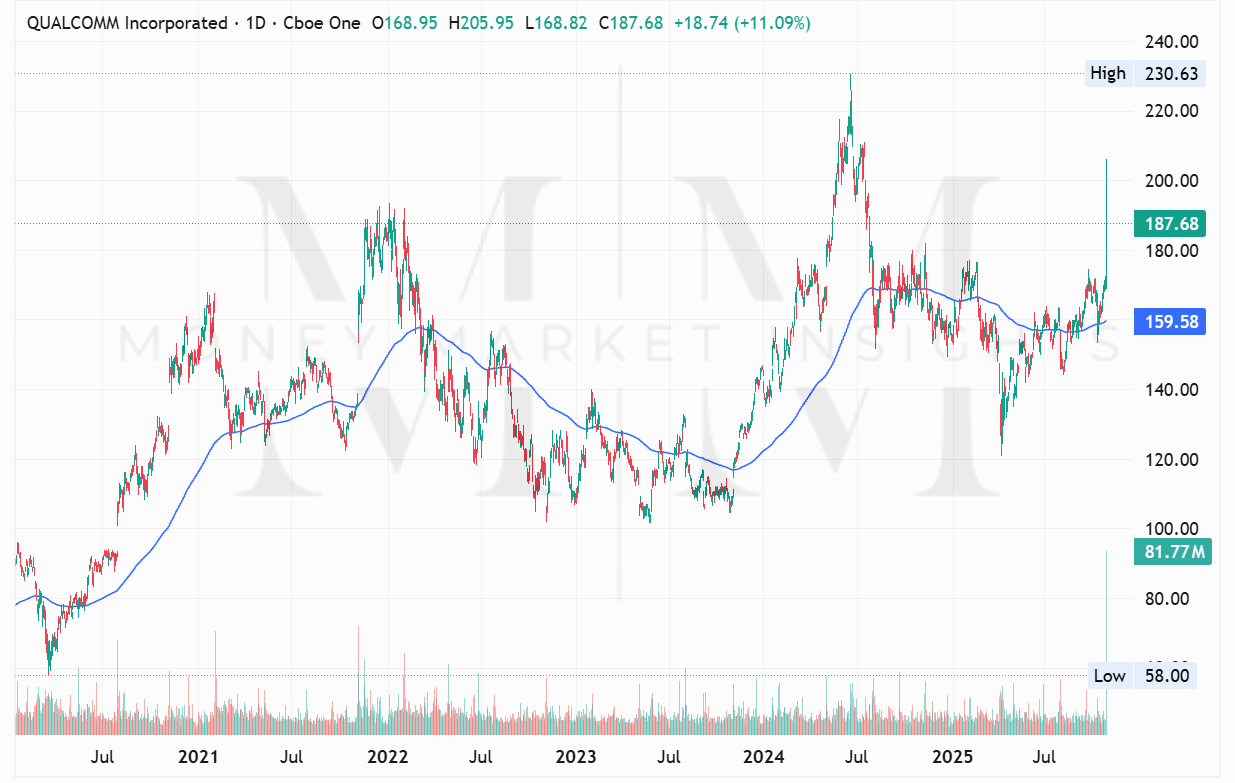Qualcomm’s Pivot from Phones to AI Racks: What Beginners Must Understand
Qualcomm is no longer just a mobile-chipmaker. Its new AI200/AI250 rack scale systems mark a bold move into data-center inference. Here’s how it works and what you should track as an investor.
Most investors know Qualcomm1 as the company that makes the modem in your smartphone. But on October 27, 2025 the company unveiled two major AI infrastructure products the AI200 and AI250 aimed at data-centers rather than phones.
If you’re a beginner investor, here’s what that shift means: it’s a strategic pivot from a mature smartphone business toward a higher-growth, more complex AI infrastructure market. That’s exciting but it also introduces plenty of risk. Let’s unpack how this pivot works, why it matters, and what you should monitor.
1. Why Qualcomm Is Making the Shift?
Smartphone market growth is plateauing globally. Qualcomm’s legacy business has fewer growth tailwinds.
AI infrastructure is growing fast. Enterprises now need large-scale “inference” hardware (running trained models) a different category than training GPUs. Qualcomm sees an opportunity.
By moving into racks (hardware + software + full‐stack solutions) Qualcomm hopes to escape the commodity fight in mobile chips and capture a more profitable niche.
2. What Exactly Qualcomm Is Doing?
For beginners: it’s useful to break it down in plain terms:
Product pivot: Qualcomm announced the AI200 (available in 2026) and the AI250 (2027) rack-scale systems built for inference (not just training).
Differentiation: These systems boast high memory per card, liquid-cooled racks, support for common AI frameworks, and emphasize “performance per watt” (cost & energy efficiency) rather than raw speed only.
Ecosystem play: Qualcomm isn’t just selling a chip it’s selling a system and software stack. They signed their first major customer (Humain, Saudi Arabia) committing ~200 MW of deployments.
Timeline: This isn’t immediate revenue. The AI200 ships 2026 and AI250 in 2027. So the pivot is a multi-year journey.
3. The What Ifs: Why It Matters for the Business
Positive scenario: If Qualcomm executes well, it could move from being “phone-chip maker” to “AI infra player”. That would open new growth engines, higher margins, greater valuation potential.
Risk scenario: But if it fails to gain meaningful market share (because incumbent players dominate, ecosystem adoption is slower, or execution falters), then the pivot could cost big and the existing business will still decline.
Flat scenario: The most likely intermediate scenario: some growth, moderate margin improvement, but not enough to radically re-rate. That means slower upside and risk of disappointment.
4. Beginner’s Checklist: What to Watch
Here are the 5 signals beginners can monitor to see if this pivot is working. Treat them like check-points, not guarantees.
New segment revenue
Growth in data-center/inference business is the pivot’s proof point
Look for “AI infrastructure” line item or “inference systems” mention in next earnings
Margin expansion or cost leverage
If this business works, margins should improve (once ramped)
Gross margin % trending up, operating margin improving
Design wins & customers
Getting big customers validates credibility
More than just the one Saudi deal, announcements of hyperscale or cloud providers adopting
Decline slows in legacy business
If mobile chip revenue keeps collapsing, pivot may be too late
Smartphone-chip revenue stable or down less steeply
Ecosystem stack works
Hardware alone isn’t enough in AI; software + integration matter
Commentary about partner integrations, software stack successes, deployment case studies
5. Beginner Strategy: What Should a Beginner Investor Do?
Entry mindset: If you believe Qualcomm’s pivot will work and you’re comfortable with multi-year horizon, you could consider a modest stake, but only after initial signals.
Wait-and-see mindset: If you’re more conservative, wait for next 1-2 earnings to show clear revenue growth from the new segment and margin improvement before committing.
Risk controls:
Cap your exposure (a small percentage of portfolio) because failure is real.
Use stop-loss or hedge (especially if you open before the signals turn).
Don’t treat this as a “safe” tech pick this is a transition story with execution risk.
Qualcomm’s shift into AI infrastructure might feel like plunging into the deep end.
For beginners, the central question is: Will this new growth engine arrive in time to offset the shrinking legacy business?
If yes, Qualcomm could reward patient investors. If no, the excitement could turn into waiting. Your edge doesn’t come from guessing the “win” today it comes from monitoring the signals, sizing the risk, and adjusting as the story unfolds.
*Disclaimer: Not Financial Advice. Investors should conduct thorough research and seek professional advice before making any investment decisions.





Excellent breakdown for beginner investors! The checklist approach is really helpful - particularly the point about monitoring the decline rate in the legacy business. That's the hidden risk many people miss when evaluating turnaround stories. One additional metric I'd suggest watching is the quarterly design win announcements. Getting hyperscale cloud providers (AWS, Azure, GCP) to adopt would be the ultimate validation, but that's a multi-year proces. The 2026-2027 timeline you mention is key - too many retail investors expect immediate results and get impatient. The comparison to the Centriq failure is worth noting too - having Humain committed before launch addresses the chicken-and-egg problem they had last time.